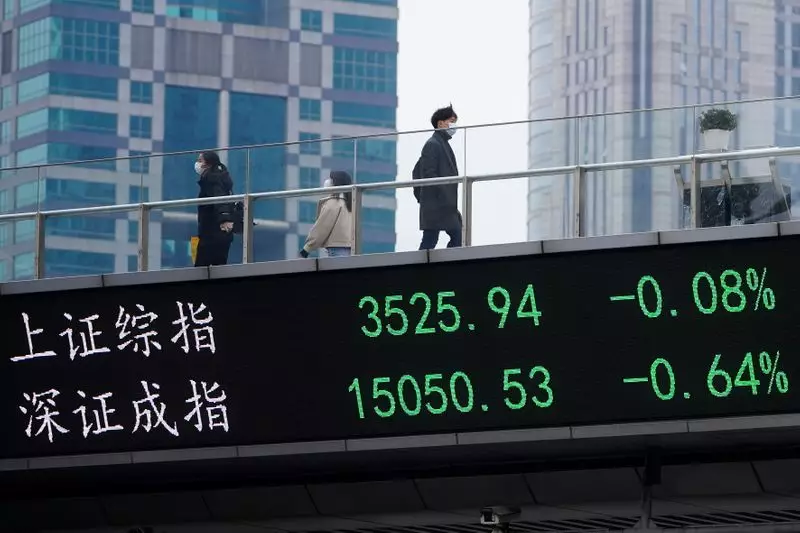On Wednesday, the landscape of Asian stock markets reflected a notable upward trend, primarily propelled by robust gains within the Chinese financial sector. The catalyst for this optimistic shift was unveiled earlier in the week when Beijing announced a series of stimulus measures aimed at bolstering economic growth that has seen better days. The ripple effect of this announcement generated exuberance in regional markets, particularly influenced by Wall Street’s performance where technology stocks experienced a remarkable rally, pushing both the S&P 500 and the Dow Jones Industrial Average to record-high standings.
The flight of investors towards the Asian markets witnessed a stream of positive sentiment as U.S. stock index futures maintained stability in Asian trading hours. The cues from the Federal Reserve, following a significant interest rate cut, have kept investors on their toes, eager for future insights from the central bank on potential monetary policy shifts.
Within this context, Chinese stock indices emerged as the standout performers with gains soaring to around 3% for both the Shanghai Shenzhen CSI 300 and Shanghai Composite indexes. Hong Kong’s Hang Seng index wasn’t left behind, climbing by 2.5%. The announcement from the People’s Bank of China, which included lowering bank reserve requirements and mortgage rates, injected a wave of optimism among investors. The measures were designed to prompt a recovery in Chinese economic growth, especially crucial after nearly three years marked by deflationary pressures and stagnated business activity.
This flurry of buying activity in Chinese stocks was also fueled by bargain hunters capitalizing on prices that had dipped to more than seven-month lows earlier in September. However, while the initial euphoria was palpable, analysts raised concerns regarding the effectiveness of these stimulus measures in inducing a substantial turnaround in the Chinese economy. ANZ analysts, for instance, suggested that more robust fiscal interventions were necessary to translate this optimism into tangible growth.
The optimism surrounding China found its way into neighboring markets, demonstrating the interconnectedness of Asian economies. South Korea’s KOSPI index recorded a modest rise of 0.2%, while Japan’s Nikkei 225 index gained 0.5%. The broader TOPIX index remained flat, as insights from the corporate services price index revealed a slight increase in producer inflation in August, paving the way for future economic reports. Investors are particularly attentive to upcoming consumer inflation data from Tokyo expected on Friday, as shifts in inflation dynamics could have wide-reaching consequences.
Meanwhile, the Indian stock market, represented by the Nifty 50 index, appeared poised for a restrained opening. The index faced formidable resistance at the psychological threshold of 26,000 points, potentially stalling any momentum gained from the Chinese market’s buoyancy.
While optimism brewed across different markets, Australia’s ASX 200 index traded sideways, failing to draw significant inspiration from the Chinese economic resurgence. This reluctance was compounded by hawkish signals emanating from the Reserve Bank of Australia (RBA). Despite keeping interest rates steady during their last meeting, the bank’s tone suggested a cautious approach to possible monetary policies, one that aligns with persistent inflation concerns.
RBA Governor Michele Bullock displayed a more tempered approach than anticipated, signaling that while no immediate changes are expected, current conditions likely require maintaining higher interest rates for an extended period. There was a slight silver lining, as recent data indicated a notable easing in consumer inflation for August, which could potentially lead to a more favorable outlook if this trend continues.
The prevailing sentiment across Asian markets on Wednesday was characterized by cautious optimism, significantly buoyed by the stimulus measures initiated by Beijing. While the data from regional markets reflected a positive outlook, underlying concerns remain, particularly regarding the effectiveness of these measures in fostering real growth. Stakeholders will keenly await upcoming economic indicators and more guidance from the central banks to navigate this complex environment. The interdependence of these regional markets underscores the delicate balance between optimism and caution as they chart their paths forward.

